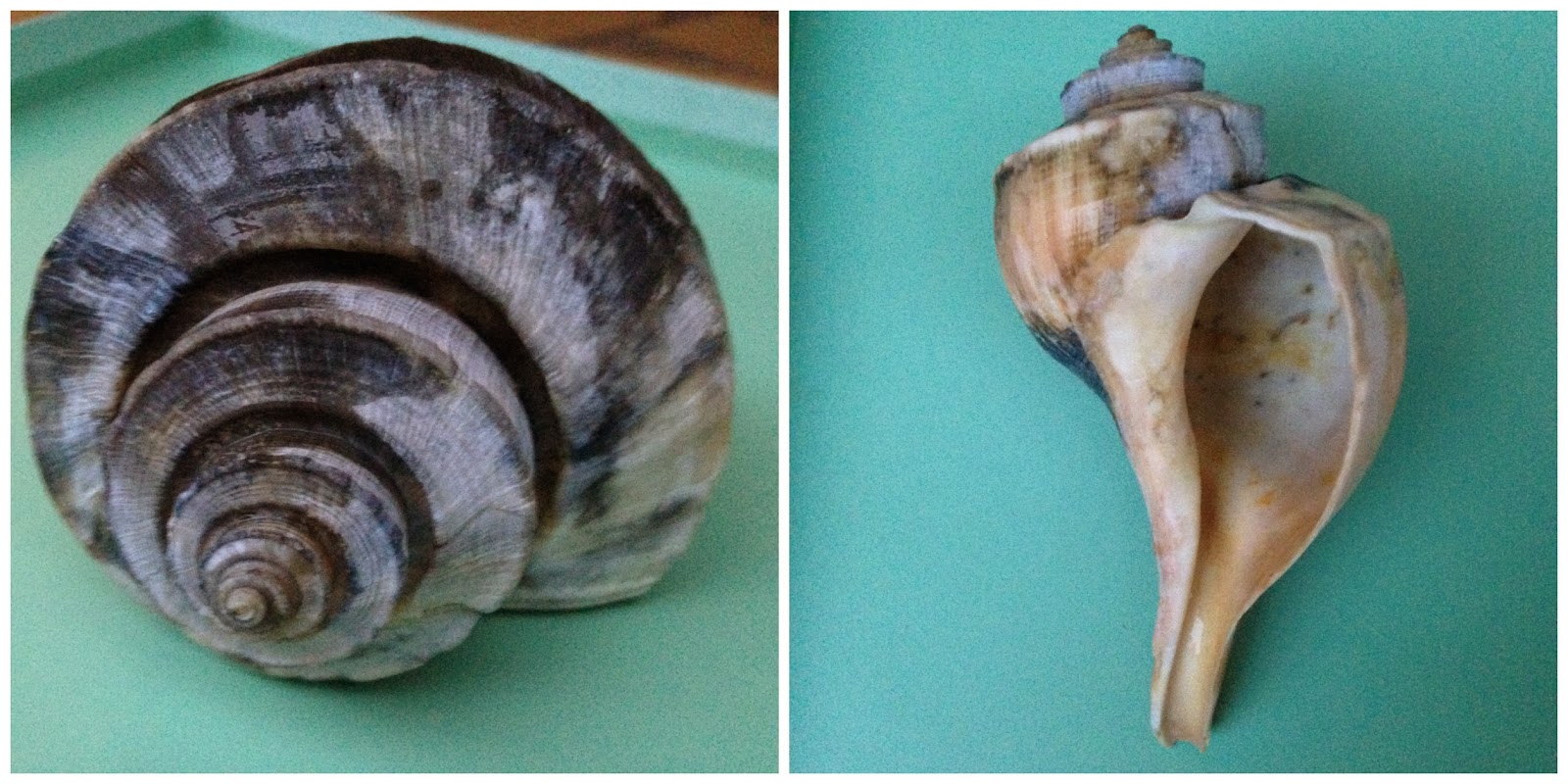I finally did the deed of removing them from the garden, and rinsing them all off. I let them sit out for a while thinking that it may take more time for all the new critters to leave. And, then it iced and snowed. On my conchs. Which actually ended up being great because I got this fantastic picture of my babies in the snow. (Conch's are resilient amazing shells, and a storm like this is nothing to them).
 |
| Winter Whelk Wonderland |
Maybe because of this small task, I was inspired in the freezing cold to check out the beach the past couple of days. Low and behold, more whelks were waiting for me on the beach.
 |
| Kiener Whelk |
 |
| Kiener Whelks |
 |
| Kiener Whelk |
 |
| Kiener Whelk |
With that said, I thought I would post a handful of pictures of the different types of whelks I have on hand, so you may also get to know the differences.
The biggest difference in all the whelks occurs with the Lightning Whelk. Lightning Whelks are the only whelk whose aperture is on the left. How cool is that?!
 | |
| Lightning Whelk |
 | |
| Knobbed Whelk |
 |
| Kiener Whelk |
 |
| Channeled Whelk |
 |
| Pear Whelk |
Cheers,
Margaret












No comments:
Post a Comment